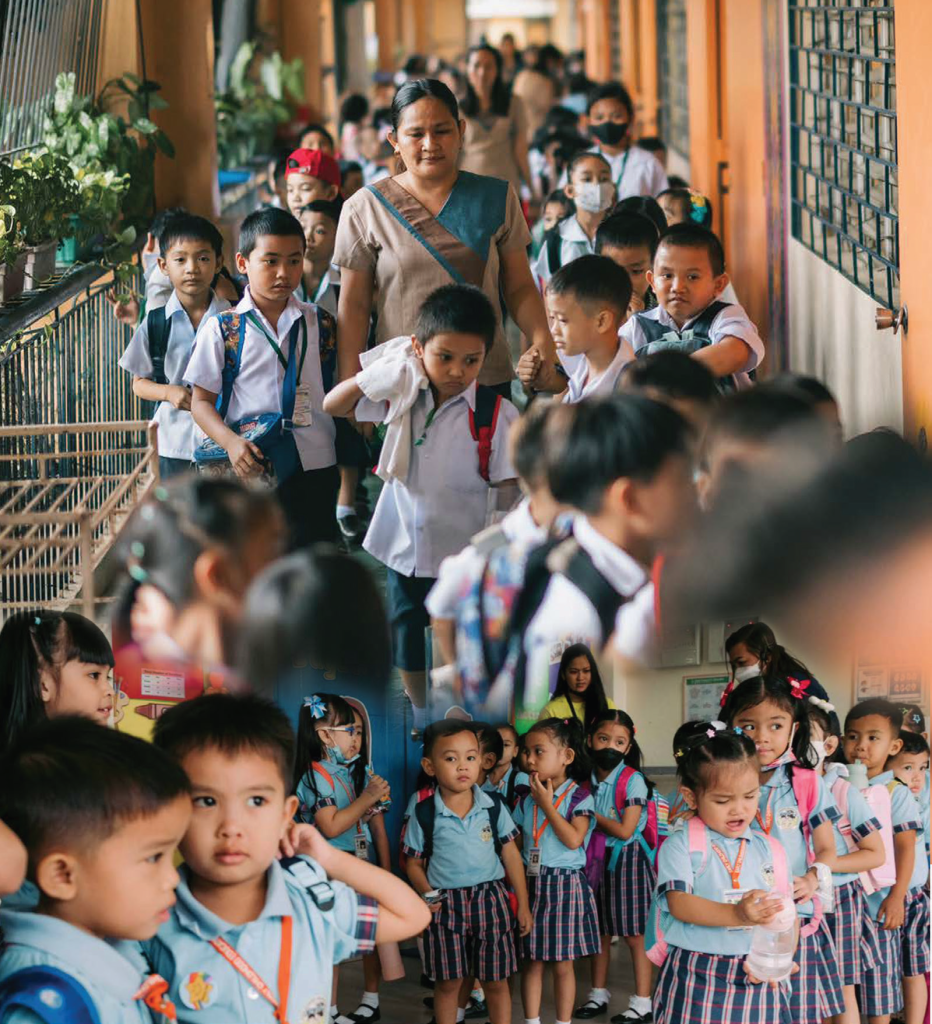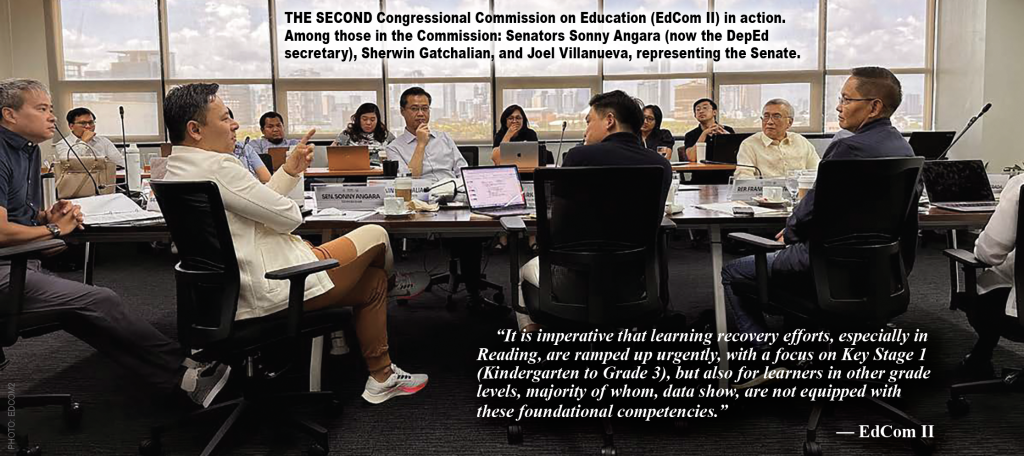By Tony Lopez

That is the marching order given by President Ferdinand Romualdez Marcos Jr. to his new Education secretary, Harvard Law-educated Juan Edgardo “Sonny” Angara, 52.
That means a stronger focus on the 3Rs of basic education—reading, ‘riting, and ‘rithmetic.
Basic education in the Philippines is free and compulsory. Kinder-garten and elementary school are grades 1–6, junior high school grades 7–10, and senior high school grades 11–12.
No read, no write
Today, majority of our students who finish elementary school cannot read, cannot write, cannot count. If they can read, they cannot understand what they read. And they cannot understand science. In fact, Filipino 15-year-olds—who have reached two years of high school—still cannot read, cannot write, and cannot count beyond 20. And they don’t know science, the how and why of things.
Since 80 to 90% of schoo-age kids, in elementary grades and in high school years, are in public schools, the government is naturally blamed for this massive failure in education.
Up to the 1970s, Filipinos were among the best educated in Asia. Philippine schools, public and private, were the envy of its Asian neighbors.
In higher learning, Harvard even put up a branch in the Philippines, the Asian Institute of Management in Makati. AIM was founded in 1968 by a consortium of prominent business leaders, Philippine academic institutions, and the Harvard Business School.
Ph left behind by neighbors
By coincidence, yes by coincidence, since AIM’s establishment, the Philippine economy deteriorated from being one of the richest, if not the richest, in Asia into an economic laggard, left behind miserably, by its Asian neighbors – China, South Korea, Taiwan, Hongkong, Singapore, Malaysia, Thailand, Vietnam, and Indonesia.
In the early 1970s, Philippine exports were ten times each of South Korea, Taiwan, Hongkong, Singapore, Malaysia, and Thailand. Today, it’s the reverse.
In 1990, the Philippines mandated, by law, early childhood education in every barangay, town, city or province. The result has been a dismal failure—a 36% compliance. And instead of learning the equivalent of 12.9 years of schooling, kinder kids learn on average only 7.5 years of schooling—five years behind.

Students fail English, math, science tests
Government tests for Grade 6 pupils show very poor results – a 54% proficiency in Filipino, 44% in English, science, and Araling Panlipunan, and 41% in math. Majority of Grade 6 students fail their basic subjects.
Two-thirds of the nation’s 44,000 barangays did not comply with the mandatory Early Childhood Care and Development Center. Region VIII (Eastern Visayas) and the Cordillera have the lowest compliance, 11% and 13%, respectively, of their barangays.
Kinder teachers incompetent
ECCD or kinder teachers are incompetent—only 52% have a college degree; 17% only a high school diploma. Despite the huge kinder enrolment (millions), colleges turn out only 80 kinder teachers a year. The ECCD teachers are badly paid, just P5,000, compared with the P27,000 a month of a DepEd kinder teacher.
The quality problem is not for lack of money. In 12 years, from 2012, DepEd produced only 27 textbooks for Grade 1 to Grade 10 pupils, a monumental incompetence. From 2018 to 2022 alone (the Duterte presidency), out of P12.6 billion budgeted for textbooks, only P952 million (7.5%) was spent.
K-12 a failure
The government also mandated adding two years to elementary schooling. Again, it was a massive failure. Reason: K-10-12 teachers were not given enough support. “Challenges in implementation include time constraints, incomplete teaching and learning resources, and limited facilities,” admits the Second Congressional Commission on Education (EdCom II) report.
To make up for the inadequacy of elementary education, the government adopted a National Learning Recovery Program (an end of schoolyear remediation education). Again, it failed. Why? “Learners who were most in need of remediation were often those who did not participate,” says EdCom II.
Learners must recover
Suggests EdCom II: “It is imperative that learning recovery efforts, especially in Reading, are ramped up urgently, with a focus on Key Stage 1 (Kindergarten to Grade 3), but also for learners in other grade levels, majority of whom, data show, are not equipped with these foundational competencies.”
Teachers in government elementary and high schools are burdened with 50 administrative tasks not related to teaching. In one school with 500 teachers, there were only four non-teaching personnel.
College education also bad
College or university education has been no better. Philippine enrolment in colleges and universities are higher than its global peers –34.89% of college-age people are in college; the average for lower middle-income countries: 25.92%.
However, “quality higher education remains elusive,” reports EdCom II.
The Philippines has 2,396 higher educational institutions (HEIs). From 2001 to 2021, the number of autonomous and deregulated private HEIs increased from 53 to only 89.
And only 182 out of the 2,396 HEIs nationwide have centers of excellence or development (COEs or CODs).
This implies that only 7.6% of colleges and universities have quality, if having a center of excellence is a sign of quality.
EdCom II says 57% of the 182 are in just seven universities or institutions; six of the seven are in Metro Manila. There are only seven very good universities in the Philippines.
To ensure the poor have access to quality education, the government provided cash subsidies (Listahanan 2.0 and Pantawid Pamilyang Pilipino Program) to the very poor. But the very poor did not receive the money. About 69% of the subsidy went non-poor people and in towns and cities which do not have any college or university.
Finally, most teachers in government schools are incompetent. From 2009 to 2023, only 33% examinees for elementary school teachers and 40% for high school teachers passed government licensing exams.
Yet, government continues to allow the operations of colleges and universities bachelor of elementary (77 colleges) and bachelor of secondary education (105 colleges) despite a perfect score of zero passing rate in government exams for their teacher graduates.
